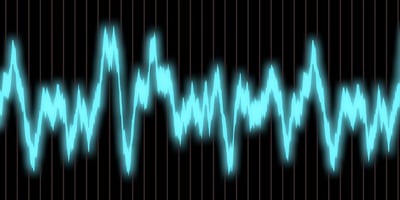Noise is everywhere. Today’s wireless systems must be able to operate efficiently as these...
What Is Additive White Gaussian Noise & Why Is It Important for Test & Measurement?
Today we’re going to talk about noise. In this context, noise refers to unwanted signals, whether emanating from natural or man-made sources, that impact the integrity of desired signals and degrade performance.
Engineers can use a noise model like an additive white Gaussian noise (AWGN) channel to emulate nature’s random processes and reproduce its effects on a system. This allows engineers to closely monitor and analyze how their system performs under simulated noise conditions and adjust their design accordingly.
In this post, we’ll take a closer look at AWGN fundamentals as well as how AWGN sources are crucial for next-generation wireless applications.
AWGN Basics
Each section of the AWGN acronym plays a part in demystifying the term. Let's break each word down one by one.
Additive: In an AWGN channel, noise is introduced to the signal of interest via addition. Rather than multiplicative, the received signal consists of the original, uncorrupted transmit signal (blue waveform in the image below) plus the noise signal (orange waveform).
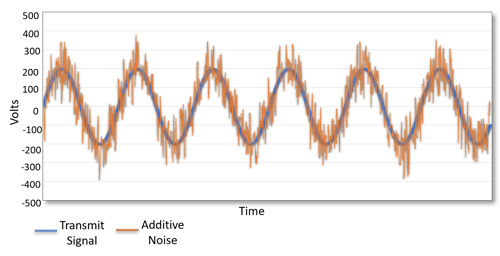
White: The term “white” is in reference to the noise having the same power distribution across every frequency. This means white noise’s power spectral density (PSD), which is a representation of power vs. frequency, will be constant. It is also a direct link to white light, which combines all visible spectrum colors at a uniform intensity.
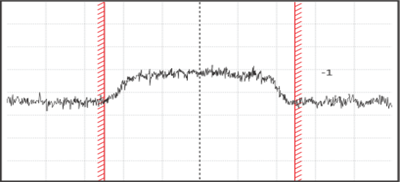
Gaussian: Also called a normal distribution, a Gaussian probability distribution of events has a zero average in the time domain, follows a bell curve, and is symmetric about the mean.
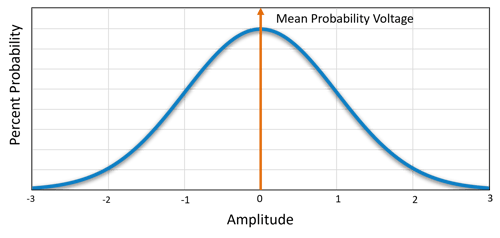
Noise: At the end of it all, an AWGN channel is all about noise. Imitating nature’s random processes, the noise is generated randomly. Furthermore, its occurrence is independent of the signal of interest, meaning both have individual probabilities.
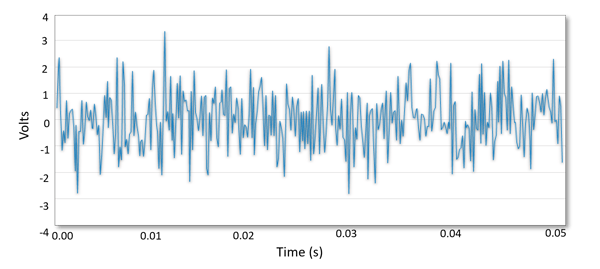
💡Need these terms broken down a bit more? Check out the article, “What is AWGN?”
Noise generators and sources, such as Noisecom noise generation solutions, can produce random, complex, and custom AWGN signals with a constant PSD and a Gaussian distribution to test a system's response to impairment.
AWGN Applications
Applications that can utilize AWGN sources reach far and wide. For example:
- Directed energy weapons (DEW) development: The high power of DEW can trigger Stimulated Brillouin Scattering (SBS), which creates a damaging reflection and imposes power output limitations. Noise generators and amplified noise modules can mitigate SBS and enable more powerful DEW, whether during design or deployment phases.
- Satellite communications testing: Satellite communications systems need to be able to reject RF interference to perform properly. Noise sources can mimic real-world impairment and put the RF signal integrity of all satellite communications links to the test.
- Fortifying encryption systems: Integrating a noise source into an encryption system can increase the protection of wireless data. Transmissions are masked with truly random, easily generated AWGN signals, which eliminates reliance on pseudo-random encryption keys and complex encryption algorithms.
These are just the tip of the iceberg. Noise sources are also integral to 5G and mmWave testing, ensuring power and signal integrity, and more.
Available Now: Poster on the Fundamentals of Noise
Want to further your understanding of noise, specifically how it is generated, controlled, packaged, and used? The free “Anatomy of a Noise Source” poster is a perfect resource to learn key AWGN facts in a condensed, easy-to-follow way.

A T&M tool of extreme importance, choose an AWGN generating device from Noisecom customized for application-specific requirements to enhance the performance of advanced wireless systems.

